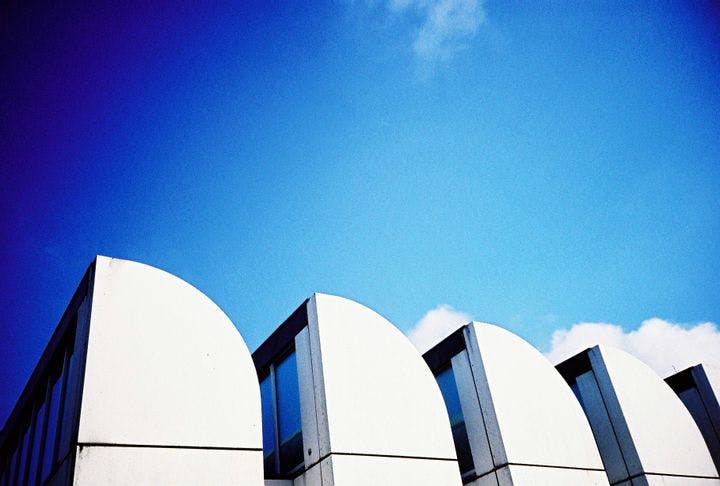Fall 2010
Forgotten Bauhaus
– The Wilson Center
So many people misunderstand Bauhaus.
Say the word Bauhaus and the thing that pops into just about everyone’s mind is Bauhaus architecture, codeword for boring, sleek, soulless, corporate design. This is all a terrible misunderstanding, declares architecture critic Martin Filler. The Bauhaus was not an architectural movement but a school for artists, architects, and designers whose uniqueness was found “not so much [in] its departure from prevailing aesthetic norms—specifically its rejection of historical styles—but rather [in] its systematic recasting of the way in which the fine and applied arts were taught.” (Many buildings deemed Bauhaus are actually Modernist works by Modernist stars who had nothing at all to do with the Bauhaus, Filler insists.)
The school was founded in Weimar, Germany, in 1919 and closed at its final location in Berlin (on suspicion of Kulturbolschewismus—cultural Bolshevism) when Hitler came to power in 1933. The Bauhaus’s key innovation was the Vorkurs, “a required introductory class that provided intensive back-to-basics immersion in the fundamentals of color theory and composition.” The course was conceived and taught by Johannes Itten, “the extravagantly eccentric, mystically inclined Swiss Expressionist painter . . . an oddball even for a radical art school,” who often donned medieval-style robes and sandals and “consumed copious quantities of garlic.”
Itten, Filler writes, was “the id to the superego” of architect Walter Gropius, the school’s first director. Together, the pair represented “both sides of the Bauhaus’s bifurcated nature, at once utopian and pragmatic, intuitive and scientific, highly ordered and subversively anarchic.” Itten left the Bauhaus in 1923 in protest over Gropius’s intent to focus on commercial prototypes rather than theoretical design.
An exhibit that ran from November 2009 to January 2010 at the Museum of Modern Art, “Bauhaus 1919–1933,” offered “an eye-opening experience for those familiar only with the cliché of the Bauhaus as a soulless assembly line of mechanistic design.” The show included Untitled (Pillar With Cosmic Visions) (1919–1920) by Theobald Emil Müller-Hummel, a wooden sculpture carved from a World War I fighter plane propeller. “Closely resembling an oceanic tribal totem, this objet trouvé—taken from an engine of mass destruction and metamorphosed into a talisman of social transformation—movingly summarizes the Expressionist search for spiritual treasure amid the wreckage of industrialized warfare,” Filler writes.
Beyond the characters of Itten and Gropius, those interested in understanding the Bauhaus should turn to two artists who exerted a “tremendous” influence on the school, Wassily Kandinsky (1866–1944) and László Moholy-Nagy (1895–1946). Kandinsky’s “pulsating colors and hyperactive forms” and Moholy-Nagy’s innovations with photography and sculpture are a far cry from the Modernist architectural style “Bauhaus” normally evokes.
THE SOURCE: “The Powerhouse of the New” by Martin Filler, in The New York Review of Books, June 24, 2010.
Photo courtesy of Flickr/Laura Thorne
